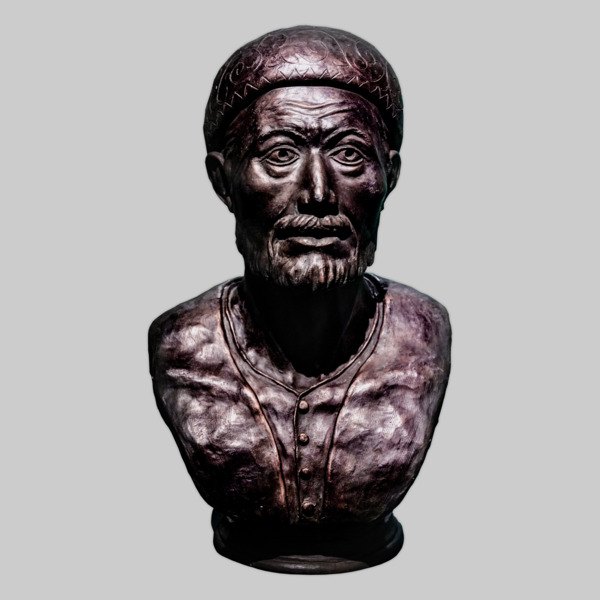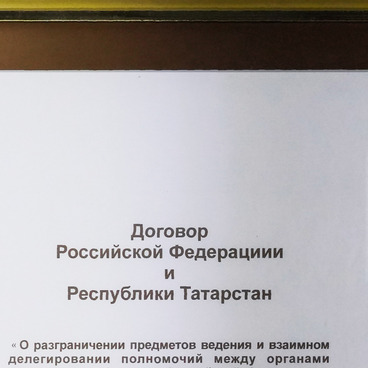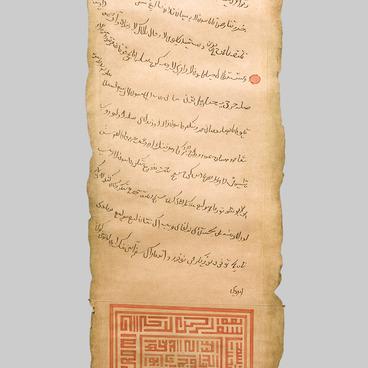The reconstruction of the portrait of the khan Muhammad-Emin was carried out by anthropologist Tatiana Balueva in 1995. To restore the ruler’s features, she used the Gerasimov method — a unique technology for recreating a human face from the skull.
Muhammad-Emin (1469–1518) was the grandson of Khan Mahmud, the son of Khan Ibrahim and princess Nur-Sultan. When his father died, his elder brother Ilgam became khan, and ten-year-old Muhammad-Emin was sent to Moscow, where he lived at the court of Grand Duke Ivan III. In 1487, Russian troops went on a military campaign against the Kazan Khanate, and as a result established the Moscow protectorate there and put Muhammad-Emin on the throne.
The ruler of the Kazan Khanate was engaged not only in politics, but also in creativity — he wrote poems, fragments of which have survived to our days. According to chronicles, during his reign, he was “a true friend of Russia”. In 1496 he was overthrown by Khan Mamuk from the Sheibanid dynasty. In 1502, the Moscow governors returned Muhammad-Emin to the throne, on which he reigned until his death in 1518. According to chronicle sources, in the last years of his life he was seriously ill and died at the age of fifty. He was buried “in the Bulgarian city of Kazan”.
In 1977, during excavations in the Kazan Kremlin, archaeologists found the foundation of two white-stone mausoleums with the remains of rich burials. They were located on the territory of the khan’s residence and, most likely, were the tombs of the khans and their family members. In the second mausoleum in the Kazan Kremlin, a skeleton of a man of the early 16th century was found, which belonged to a 45-50 year-old man that corresponded to the age of Muhammad-Emin.
Researchers examined the skeleton and confirmed that it belonged to Muhammad-Emin. The analysis showed that the man had osteochondrosis of the thoracic spine and this disease caused acute pain when moving. Also, scientists found changes in the shape of the back of the head and other bones, which spoke of the long-term stress of a professional rider. By all indications, the skeleton belonged to the Central Asian variant of the Mongoloid type. This is quite natural because Muhammad-Emin was a Mongol and a direct descendant of Genghis Khan. In appearance, he was sharply different from the rest of the population of the Volga Bulgaria and the Kazan Khanate which later arose on its territory.
Muhammad-Emin (1469–1518) was the grandson of Khan Mahmud, the son of Khan Ibrahim and princess Nur-Sultan. When his father died, his elder brother Ilgam became khan, and ten-year-old Muhammad-Emin was sent to Moscow, where he lived at the court of Grand Duke Ivan III. In 1487, Russian troops went on a military campaign against the Kazan Khanate, and as a result established the Moscow protectorate there and put Muhammad-Emin on the throne.
The ruler of the Kazan Khanate was engaged not only in politics, but also in creativity — he wrote poems, fragments of which have survived to our days. According to chronicles, during his reign, he was “a true friend of Russia”. In 1496 he was overthrown by Khan Mamuk from the Sheibanid dynasty. In 1502, the Moscow governors returned Muhammad-Emin to the throne, on which he reigned until his death in 1518. According to chronicle sources, in the last years of his life he was seriously ill and died at the age of fifty. He was buried “in the Bulgarian city of Kazan”.
In 1977, during excavations in the Kazan Kremlin, archaeologists found the foundation of two white-stone mausoleums with the remains of rich burials. They were located on the territory of the khan’s residence and, most likely, were the tombs of the khans and their family members. In the second mausoleum in the Kazan Kremlin, a skeleton of a man of the early 16th century was found, which belonged to a 45-50 year-old man that corresponded to the age of Muhammad-Emin.
Researchers examined the skeleton and confirmed that it belonged to Muhammad-Emin. The analysis showed that the man had osteochondrosis of the thoracic spine and this disease caused acute pain when moving. Also, scientists found changes in the shape of the back of the head and other bones, which spoke of the long-term stress of a professional rider. By all indications, the skeleton belonged to the Central Asian variant of the Mongoloid type. This is quite natural because Muhammad-Emin was a Mongol and a direct descendant of Genghis Khan. In appearance, he was sharply different from the rest of the population of the Volga Bulgaria and the Kazan Khanate which later arose on its territory.






